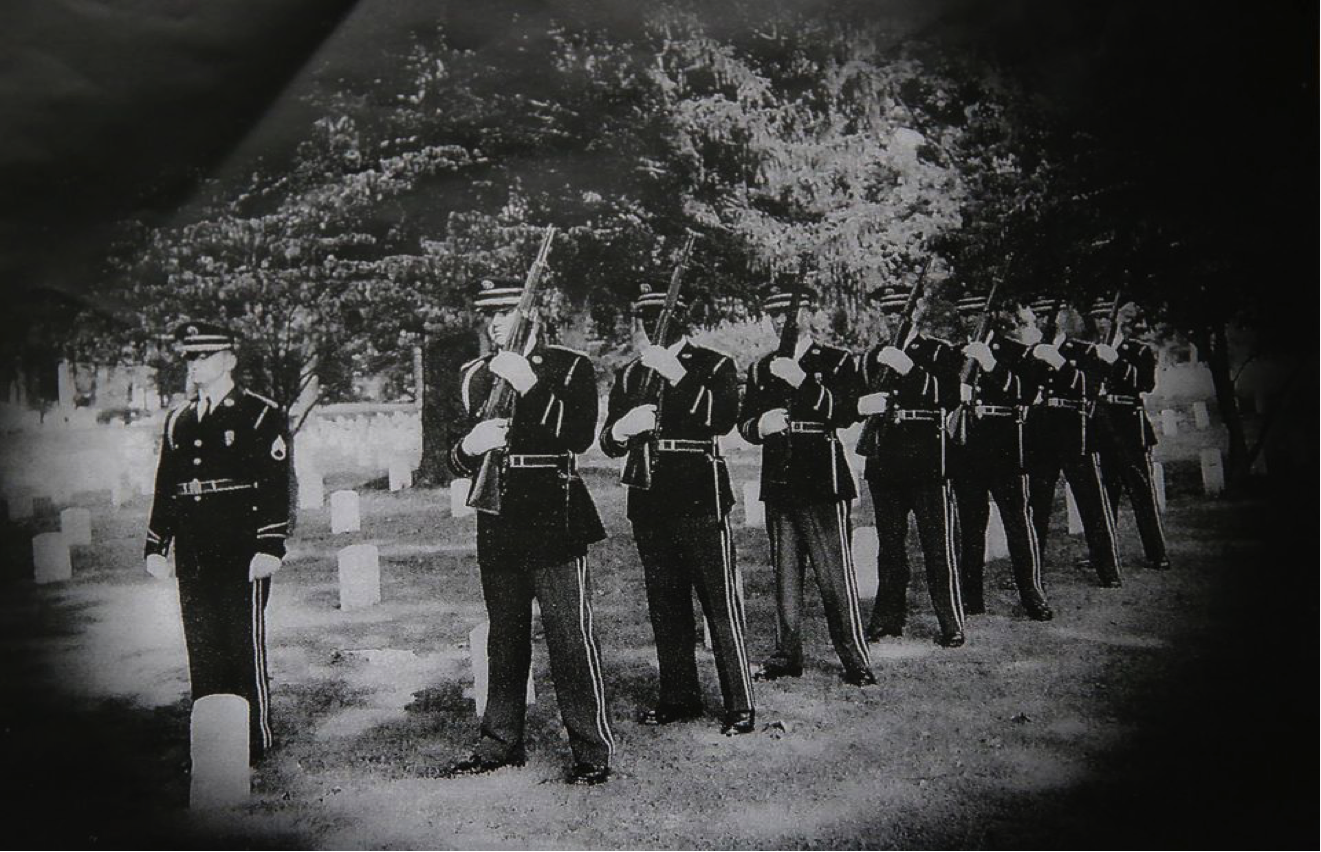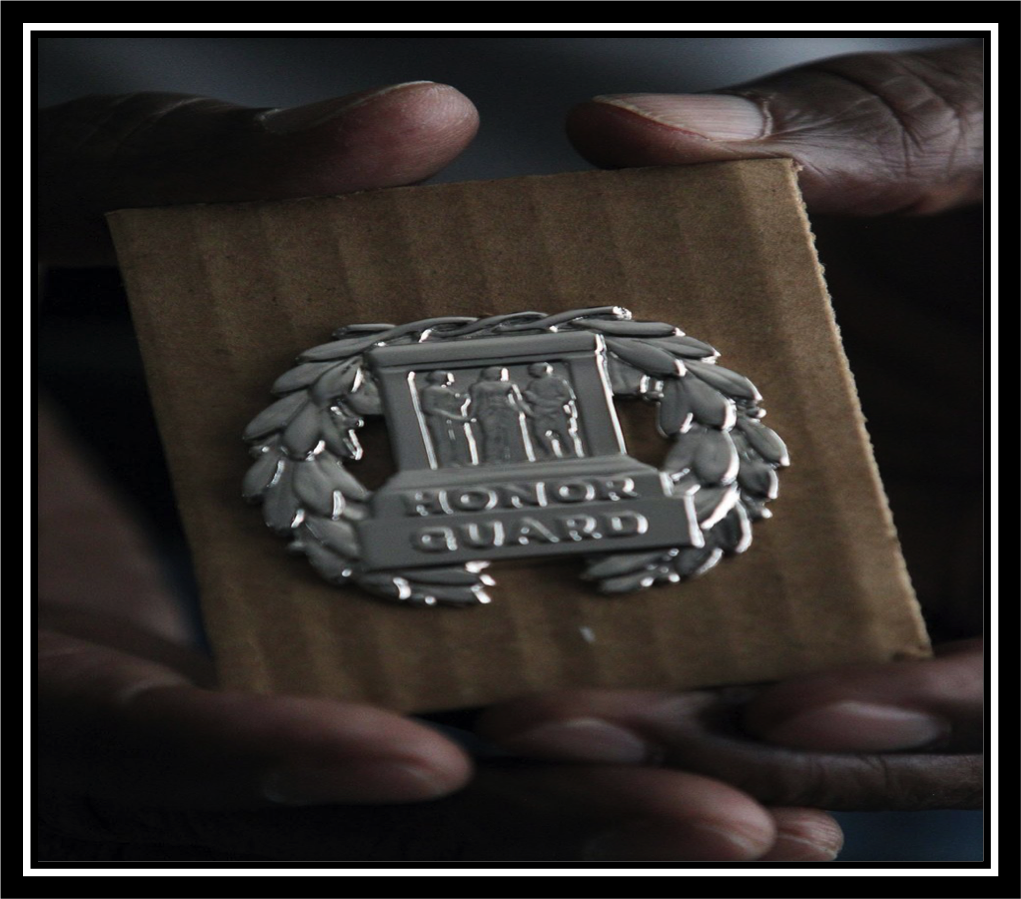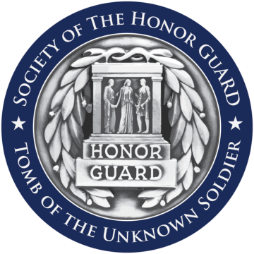
Fred Moore
Tomb Position
SentinelTomb Relief
Tomb Dates
Mar 1961 - Aug 1961Society Membership
MemberTomb Reflections
Fred Moore recalls duty as first black Honor Guard at Tomb of the Unknown SoldierBy Brian Albrecht, The Plain Dealer, Updated January 12, 2019; Posted February 25, 2015
CLEVELAND, Ohio -- This chapter of Black History Month will unfold in a 21-count cadence, because that was once the rhythm of duty for the first black American to serve on the Honor Guard for the Tomb of the Unknown Soldier at Arlington National Cemetery.
For eight months in 1961, Fred Moore, now 79, of Cleveland, literally walked the walk at the memorial, also known as the Tomb of the Unknowns. The tomb honors the unidentified remains of three combatants from World War I, World War II and the Korean War.
Moore was part of an elite unit that guards the tomb 24 hours a day, seven days a week. Living and working by the "21s."
Twenty-one steps south, symbolizing the highest military honor that can be bestowed -- a 21-gun salute. Turn and face east for 21 seconds. Turn and face north, changing weapon to outside shoulder, always on the side closest to visitors, signifying that the guard
stands between the tomb and any possible threat.
Wait 21 seconds, take an equal number of steps down the black mat, turn to face east, turn to face south, change weapon shoulder, wait, repeat process. Again and again until relieved.
Always focused, never distracted, even by the calls of pretty girls or the tears of old vets. Through rain, snow and summer heat. Nothing breaks that concentration unless somebody crosses the chain line separating visitors from the tomb.
Moore never envisioned that duty would be how he'd wind up serving his country when he was drafted in 1959.
The 1956 graduate of East Technical High School was working at a supermarket when the draft notice arrived. Moore was initially irked by the call.
"I'd been working and a lot of guys that I knew weren't working. They were hanging around the pool room and things like that," he recalled. "I just felt it was unfair."
And a little daunting, too, for a guy who'd never been outside Ohio. "It just seemed like I was going to another planet," Moore said.
The 6-foot, 185-pound recruit scored high during initial training tests and was asked if he'd be interested in joining a unit of the Third Infantry Regiment, known as the Old Guard (or Honor Guard).
Moore said he was told it was a real spit-and-polish outfit, but otherwise "I didn't have a clue as to what it was. I said OK, not giving it much thought."
While he enviously watching others in his training group shipped overseas to posts in Korea and Germany -- "I really wanted to go to Germany, he said -- Moore was sent to Fort Myer, Virginia, for Honor Guard training.
He initially served in the unit that provides rifle salutes for graveside services at Arlington. The company also served at receptions for visiting foreign dignitaries and other ceremonial duties.
Moore said he marched in the inauguration parade for President John F. Kennedy, and also had duty at Kennedy's inaugural ball where "I got to see a lot of people I probably wouldn't have gotten a chance to see otherwise, all the big wheels and leaders in
Congress."
Kennedy had a role in Moore's assignment to the unit guarding the Tomb of the Unknown Soldier. Moore said when the president brought Ghana President Kwame Nkrumah to a wreath-laying ceremony at the tomb, Nkrumah asked Kennedy why none of the guards were people of color.
"Next thing I know I was told to get my stuff, I was going to the tomb guard platoon," Moore said.
He was not aware that he was the first black soldier to serve in that unit until Ebony magazine did a story about him a few months later.
"It never dawned on me. I just assumed that somebody had been out there," Moore said. "I never, in my wildest dreams, ever thought I was the first."
The distinction didn't make him nervous. Just doing the job right, all the time, every time, did.
The hardest part was "just maintaining your focus, because if you messed up, you were relieved," Moore said.
He'd concentrate on the 21 counts, over and over, paying no heed to the women who would shout out, giving him their names, hotels and phone numbers. Moore said he could totally block that out, but as soon as he went off duty, every detail of those shouts would come rushing back to him.
He never took the girls up on their invitations. He'd gotten married while in the Guard to his wife of 54 years now, Joyce Singleton-Moore, whom he met through his sister back home.
Only once did he break that 21-count concentration, when a small child ducked under the chain separating visitors from the tomb. "I had to challenge him, and he got out in a hurry," Moore recalled.
That challenge? "It is requested that all visitors remain outside the chain. Would the parents of this child please remove him from the chain."
"It's easier now because they moved the chain back. When I was there, you could walk up and touch me," Moore said.
Sometimes they didn't have to be close to touch him. Often there were emotional reactions among visitors to the tomb, "especially with some of the older guys who I guess were in World War I or World War II," Moore said. "You could see some of the guys in tears."
All in a day's work. Or night, when Moore said the gleam of the surrounding marble in the moonlight illuminated his surroundings. He never found it eerie to work at night, but there were times when he could feel he was being watched.
"Even though the cemetery is closed, you've still got a procedure that you have to do," Moore said. Some guards didn't and got caught, he noted.
The best part of his duty was the camaraderie of other guards in the unit, Moore said. "Those guys were tremendous. They could have made it hard for me, but we're still great friends to this day," he said.
When his service contract ended, Moore was ready to put down that 10-pound rifle and heavy wool dress uniform. "I was ready to get back home and get my family started," he said.
He and Joyce raised a son and a daughter, and now have five grandchildren. After the Army, Moore worked for Sherwin-Williams in Cleveland, and then for the Cuyahoga County administration until he retired.
He regularly returns to Arlington for Honor Guard reunions held every other year. He recalled being surprised at the first reunions he attended, when he was constantly greeted by younger guards and approached with requests for his photo.
Moore soon discovered that he had become part of the test questions for Honor Guard recruits who had to name the first black member of the unit.
Nowadays he looks back on his Honor Guard service with a mixture of pride and gratitude. When asked if he set a precedent for future black Honor Guard members, Moore said, "I hope so. It seemed like I tried to do it in such a professional way that they wouldn't have any excuse to deny somebody else from coming in."
And above all there was that feeling that marched with him.
"It was special to me because of those guys (buried at Arlington)," Moore said. "Those guys were the real heroes to me, the guys who sacrificed their lives.
"That was the main thing, honoring them."
Twenty-one steps at a time.
Contact Information
Support the Society
The Society of the Honor Guard, Tomb of the Unknown Soldier (SHGTUS) is able to provide our programs, events, assistance, scholarships, and services due to the generosity of its members, organizations, and individuals. SHGTUS does not receive institutional funding. Note: The Society of the Honor Guard, Tomb of the Unknown Soldier is a 501(c)(3) organization, so your contributions may be fully tax deductible.
Learn More
Did you know?
Has anyone ever tried to get past the Tomb guards, or attempted to deface the Tomb?
Yes, that is the reason why we now guard the Tomb. Back in the early 1920's, we didn't have guards and the Tomb looked much different. It was flat at ground level without the 70 ton marble 'cap'. People often came to the cemetery in those days and a few actually used the Tomb as a picnic area, likely because of the view. Soon after in 1925, they posted a civilian guard. In 1926, a US Army soldier was posted during cemetery hours. On July 1, 1937 guard duty was expanded to the 24 hour watch. Since then, the ceremony has evolved throughout the years to what you see today. Today, most of the challenges faced by the Sentinels are tourists who are speaking too loudly or attempting to get a better picture (by entering the post).










